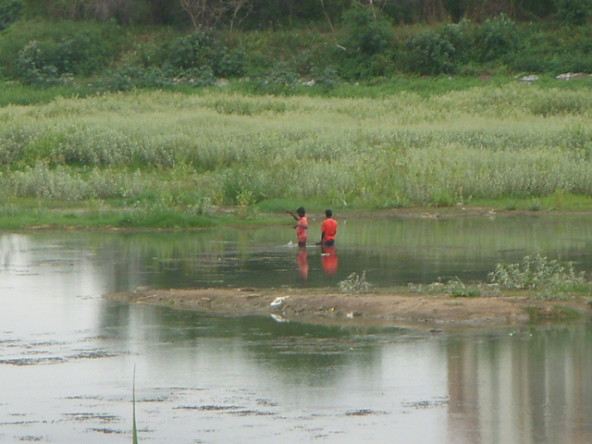Bangalore is a brand the world identifies India with. It is also the single biggest reason why India has become such a hot investment destination.—Manmohan Singh, Prime Minister of India
Being the world’s most populous country—as projected for 2025—affords India the political, social, and economic capital to influence the entire globe. With half the population under the age of 25, the success of India will be defined by access to education, preservation of its cultures, the health of its children, the quality of its communities, the mobility of its people, and the sustainability of its resources.
In India, population growth is a major issue that is putting a major strain on the country’s resources and its cities. The rapid urban expansion of Indian cities is happening at a speed quite unlike anything the world has seen before. Yet the potential for Indian cities is tremendous. India has become a powerful engine driving and shaping the world’s economies, culture, technology, and development. The rapid, chaotic growth of Indian cities, however, creates key challenges that will need to be tackled forcefully to ensure that promise.
Bangalore, formerly known as the Garden City, is a metropolis of 5.4 million people that was once dotted with hundreds of lakes, which created a livable city providing food and water for residents, opportunities for livelihoods, habitat for rare and migratory birds, and a rich cultural heritage. The lakes and parks, as well as the mild climate, created a city that many perceived as one of the best places to live and work in the country. With the city’s rapid development, and a lack of public action to protect the natural resources of the city, today less than a third of the lakes remain. There is pollution from human and industrial waste and land filling has occurred through illegal dumping and development.
Are you enjoying this article? Read more like this, plus SSIR's full archive of content, when you subscribe.
The lake’s polluted condition has created a health and humanitarian crisis, as hundreds of thousands of slum dwellers depend on the city’s surface waters for potable water and their livelihood. Each day these residents use the polluted water from the lakes for their daily needs. This has created an economic and cultural crisis, because the loss of the lakes represents the loss of economic opportunity and the very characteristics that traditionally have brought economic growth to the city.
 Residents along the edge of the polluted Banthur Lake, Bangalore.
Residents along the edge of the polluted Banthur Lake, Bangalore.
Leaving the restoration of the lakes to conventional government methods will continue to mean ongoing degradation in the short and medium term, as there is no clear regulatory body to oversee the transformation. The constituency is diverse and the multitude of regulatory jurisdictions that have some sort of leverage makes restoring the Lakes of Bangalore a complex challenge involving many aspects of the city’s infrastructure, ecological, and social systems. It’s exactly these challenging interconnections that the Sherwood Institute, a nonprofit dedicated to improving water and energy infrastructures, and its local and international partners are prepared to solve.
The solution includes efforts in a variety of areas: from garnering local political support and creating a Lake Development Advisory Commission, to working to affect policy in Bangalore and fundraising for early phase restoration efforts.
The first phase of the restoration will:
• Analyze existing conditions and fully understand the complex web of interconnections and the local existing conditions that have polluted the lakes so badly.
• Create a Blueprint for a Blue Bangalore that will blend Sherwood Institute’s and its partner’s experience in innovative, regenerative design and help articulate a new vision for the city’s urban and economic development, based on a sound use of its natural resources.
• Provide a comprehensive road map for that future.
• Finally, this blueprint will be initiated with the execution of three Lake Restoration Pilot Projects that will clean the water, restore ecology, invigorate local communities, and provide much needed accessible public open space.
The goal is to reintegrate the lakes as major public open space amenities and natural resources for the city, which can provide the seeds toward an overall sustainable transformation of the various districts of Bangalore—and importantly, reclaim the historical connection to the many lakes that dot the Bangalore landscape.
This campaign not only attempts to recapture the heritage of the Garden City, it also serves as an international model to support regional ecosystems for sustainable water infrastructure design and to demonstrate how green infrastructure can restore the balance to devastated urban ecological systems. The overarching goal is to create innovative sustainable urban forms that enhance city living with walkable, transit-oriented districts humanized by their natural amenities.
We believe that the vision for the lake restoration is a key step toward a major quality of urban life enhancement in Bangalore, one that will enhance Bangalore on the global marketplace as a unique creative place in the technology sector but also as a great place to live to attract global talents and businesses that are critical to the overall success of the city and the country.
Water is a resource that is critical to the success of the country. The lakes in Bangalore are a major element that defines the city and add to the overall quality of life in Bangalore. Hopefully, this initiative can provide a way forward for similar initiatives elsewhere in the country.
Support SSIR’s coverage of cross-sector solutions to global challenges.
Help us further the reach of innovative ideas. Donate today.
Read more stories by Michel St Pierre.

